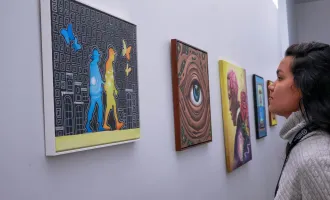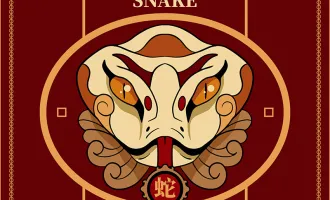
Dior Designers Still Wow
Editor's note: This is part 6 of the limited series on the celebrated haute couture designer, Christian Dior. Christian Dior was only able to lead the House of Dior, his haute couture house, for ten years until his death in 1957.
Upon his passing, he left behind an irreplaceable hole in the fashion world, a couture house that had lost its founder, and — among other things — a successor in line to continue the legacy.
Only two months before his death, Dior had personally chosen Yves Saint Laurent, his trusted assistant at the time, as his successor. Thus, in 1957, Saint Laurent became the creative director of the House of Dior.
In total, he created six collections for Dior, debuting fresh designs such as the “Trapeze” dress and the avant-garde “Beatnik” collection.
After Saint Laurent’s conscription, the House of Dior would progress through more artistic directors over the years — Marc Bohan with his svelte, youthful “Slim Look,” Gianfranco Ferré with his flamboyant, baroque-inspired designs, John Galliano with his innovative, theatrical looks, and more as time went on.
After Galliano left in 2011, things seemed to calm down a bit when Raf Simons entered the picture in 2012. Often termed a “minimalist,” he created looks that were simple, clean, and elegant. But they were far from boring.
With his heavy emphasis on the garment’s lines, one could thoroughly appreciate each carefully included decoration, whether it was a tasteful embellishment, accessory, or interesting print. Paying homage to Dior himself, his pieces often alluded to the founder’s classic shapes — Simons’s Look 10 Bar Coat, for instance, reinterprets the classic Dior Bar Suit in a dramatic red wool, the shoulders soft, the skirt full, and the waist accentuated with a gold metal belt. Furthermore, he had the unique ability to reference history, such as the 18th century, in his collections without creating overly “costumey” or copied looks.
They might have been inspired by certain times in the past, but in the end, they were always his own original, modern translations.
And so, under his direction, Dior returned to a simple, yet quiet elegance, that mirrored the modern lifestyle without forgetting the past.
In 2017, the Musée des Arts Décoratifs in Paris held a grand exhibition named “Christian Dior, Couturier du rêve,” or “Christian Dior, Designer of Dreams,” to honor the House of Dior’s 70th anniversary.
Featuring the couture works of Dior and his successors, it showed how the legacy of Dior has perpetuated throughout the years.
With the exhibition’s huge success, the official Christian Dior YouTube channel uploaded a documentary of the museum showing in April 2020. In one section of the video, the curators discussed the enduring impacts of each of Dior’s successive designers.
“It’s impossible to speak about Dior without mentioning all the other talented designers that worked in this company for so long,” said Maria Grazia Chiuri, current creative director of Dior, in the video. “Saint Laurent, Marc Bohan, Ferré, Galliano, Raf Simons — they are all part of our heritage.”
In 2016, Chiuri became the creative director of the House of Dior. The first woman ever in the House’s history to assume this position, she brings a new focus to the meaning of couture, and on what it means to be a woman in today’s world.
To her, femininity is fluid, and she aims to help women express themselves through her designs — for, by her beliefs, fashion is not just about aesthetics; it is also about how you think and feel.
In her designs, Chiuri not only celebrates the modern woman, but also comments on the changing social attitudes of the world — through pieces ranging from slogan T-shirts to tailored power suits.
Though occasionally controversial, the looks are powerful. They have opinions, and they make statements even off the runway, reinterpreting the impact of women’s fashion.
But there is also a softer side, expressed through Chiuri’s sheer, ethereal gowns fit for any modern princess — a tribute to her view that there is no one way to be a strong woman. There is no one way to be a feminist.
Thus, with Chiuri at the center, Dior is still feminine, as its founder wanted it to be. However, it is now a contemporary, more limitless kind of feminine that encourages self-expression and social awareness.
With every designer who stepped in to lead the House, Dior explored a new direction, experimenting with new looks and images. But no matter how different these could be, the ideals central to Dior — femininity, elegance, and craftsmanship — never left. It is this perseverance, this ability to progress through time without surrendering its values, that makes Dior a true legacy.
In the final part of the series, we look at the Musée des Arts Décoratifs exhibition, “Designers for Dior,” which was created in Dior’s honor.



